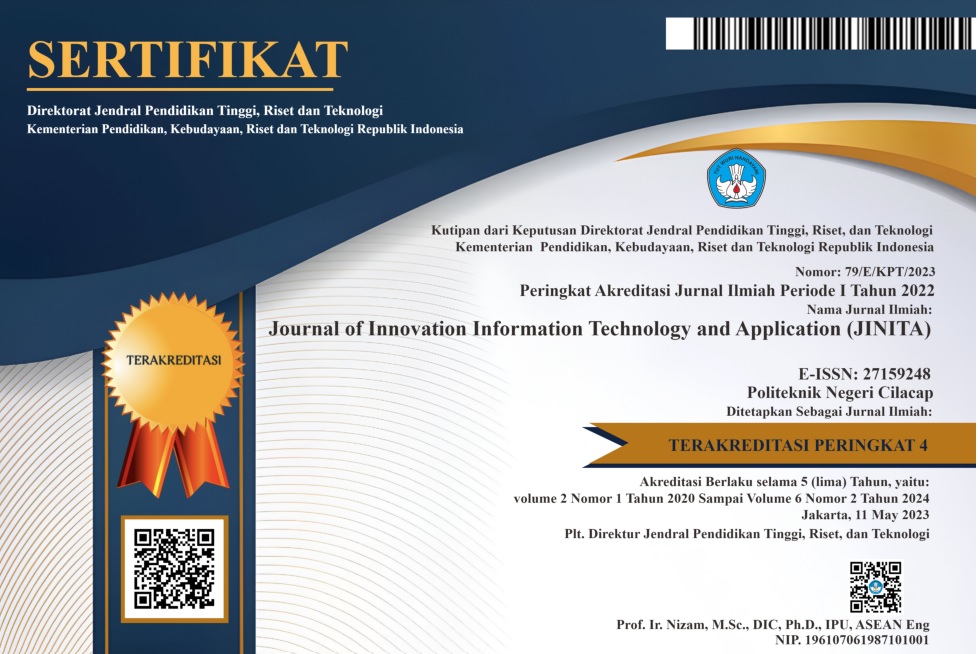Comparative Analysis of Keypoint Detection Performance in SIFT Implementations on Small-Scale Image Datasets
 Abstract views: 46
,
Abstract views: 46
,
 PDF downloads: 48
PDF downloads: 48
Abstract
Scale-invariant feature transform (SIFT) is widely used as an image local feature extraction method because of its invariance to rotation, scale, and illumination change. SIFT has been implemented in different program libraries. However, studies that analyze the performance of SIFT implementations have not been conducted. This study examines the keypoint extraction of three well-known SIFT libraries, i.e., David Lowe's implementation, OpenSIFT, and vlSIFT in vlfeat. Performance analysis was conducted on multiclass small-scale image datasets to capture the sensitivity of keypoint detection. Although libraries are based on the same algorithm, their performance differs slightly. Regarding execution time and the average number of keypoints detected in each image, vlSIFT outperforms David Lowe’s library and OpenSIFT.
References
D. G. Lowe, “Object recognition from local scale-invariant features,” Proceedings of the Seventh IEEE International Conference on Computer Vision, pp. 1150–1157 vol.2, 1999, doi: 10.1109/ICCV.1999.790410.
D. G. Lowe, “Distinctive image features from scale invariant keypoints,” International Journal of Computer Vision, vol. 60, pp. 91–11020042, 2004, doi: 10.1023/B:VISI.0000029664.99615.94.
Z. Wang, Y. Liu, J. Zhang, C. Fan, and H. Zhang, “Interference image registration combined by enhanced scale-invariant feature transform characteristics and correlation coefficient,” J Appl Remote Sens, vol. 16, no. 2, p. 26508, 2022.
S. Joseph, I. Hipiny, H. Ujir, S. F. S. Juan, and J. L. Minoi, “Performance evaluation of SIFT against common image deformations on iban plaited mat motif images,” Indonesian Journal of Electrical Engineering and Computer Science, vol. 23, no. 3, pp. 1470–1477, Sep. 2021, doi: 10.11591/ijeecs.v23.i3.pp1470-1477.
P. Selvaraj and M. Karuppiah, “Enhanced copy-paste forgery detection in digital images using scale-invariant feature transform,” IET Image Process, vol. 14, no. 3, pp. 462–471, Feb. 2020, doi: 10.1049/iet-ipr.2019.0842.
M. Kasiselvanathan, V. Sangeetha, and A. Kalaiselvi, “Palm pattern recognition using scale invariant feature transform,” International Journal of Intelligence and Sustainable Computing, vol. 1, no. 1, pp. 44–52, 2020.
R. Hess, “An open-source siftlibrary,” in Proceedings of the 18th ACM international conference on Multimedia, 2010, pp. 1493–1496.
I. Rey Otero and M. Delbracio, “Anatomy of the SIFT Method,” Image Processing On Line, vol. 4, pp. 370–396, Dec. 2014, doi: 10.5201/ipol.2014.82.
M. Y. Yin, F. Guan, P. Ding, and Z. F. Liu, “Implementation of image matching algorithm based on SIFT features,” in Applied Mechanics and Materials, Trans Tech Publications Ltd, 2014, pp. 3181–3184. doi: 10.4028/www.scientific.net/AMM.602-605.3181.
E. Yang, F. Chen, M. Wang, H. Cheng, and R. Liu, “Local Property of Depth Information in 3D Images and Its Application in Feature Matching,” Mathematics, vol. 11, no. 5, Mar. 2023, doi: 10.3390/math11051154.
Y. Gu, H. Wang, Y. Bie, R. Yang, and Y. Li, “Research on Image Registration of Different Wavebands Based on SIFT Algorithm,” in 2022 3rd China International SAR Symposium (CISS), 2022, pp. 1–5.
D. G. Lowe, “The SIFT Keypoint Detector,” 2005 [Online]. Available: https://www.cs.ubc.ca/~lowe/keypoints/.
R. Hess, “OpenSIFT: An Open-Source SIFT Library,” 2012 [Online]. Available: https://robwhess.github.io/opensift/.
A. Vedaldi and B. Fulkerson, “VLFeat - An open and portable library of computer vision algorithms,” Proceedings of the international conference on Multimedia - MM ’10, p. 1469, 2010, doi: 10.1145/1873951.1874249.
A. Krizhevsky, “Learning Multiple Layers of Features from Tiny Images,” 2009.
L. N. Darlow, E. J. Crowley, A. Antoniou, and A. J. Storkey, “CINIC-10 Is Not ImageNet or CIFAR-10.” 2018 [Online]. Available: https://datashare.is.ed.ac.uk/
Copyright (c) 2024 Arif Rahman

This work is licensed under a Creative Commons Attribution 4.0 International License.
Authors who publish with this journal agree to the following terms:
- Authors retain copyright and grant the journal right of first publication with the work simultaneously licensed under a Creative Commons Attribution License that allows others to share the work with an acknowledgement of the work's authorship and initial publication in this journal.
- Authors are able to enter into separate, additional contractual arrangements for the non-exclusive distribution of the journal's published version of the work (e.g., post it to an institutional repository or publish it in a book), with an acknowledgement of its initial publication in this journal.
- Authors are permitted and encouraged to post their work online (e.g., in institutional repositories or on their website) prior to and during the submission process, as it can lead to productive exchanges, as well as earlier and greater citation of published work (See The Effect of Open Access).
















